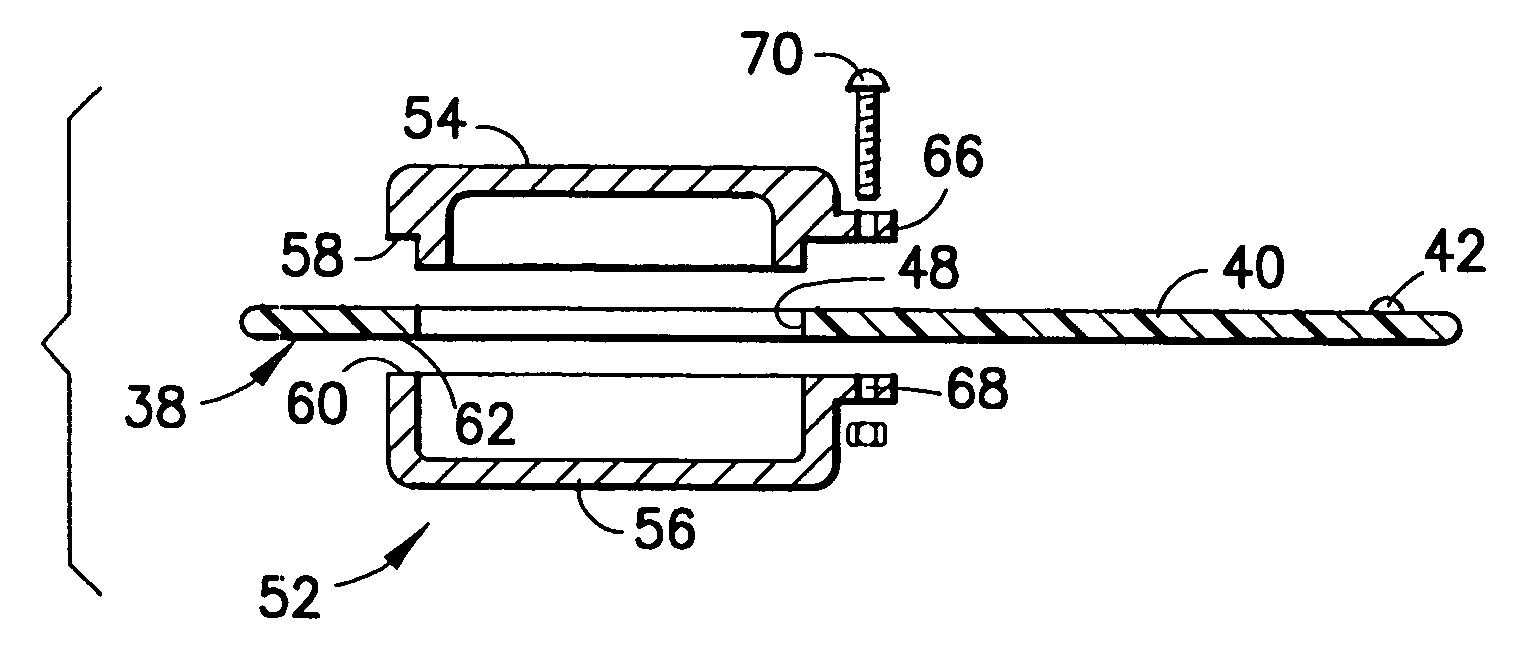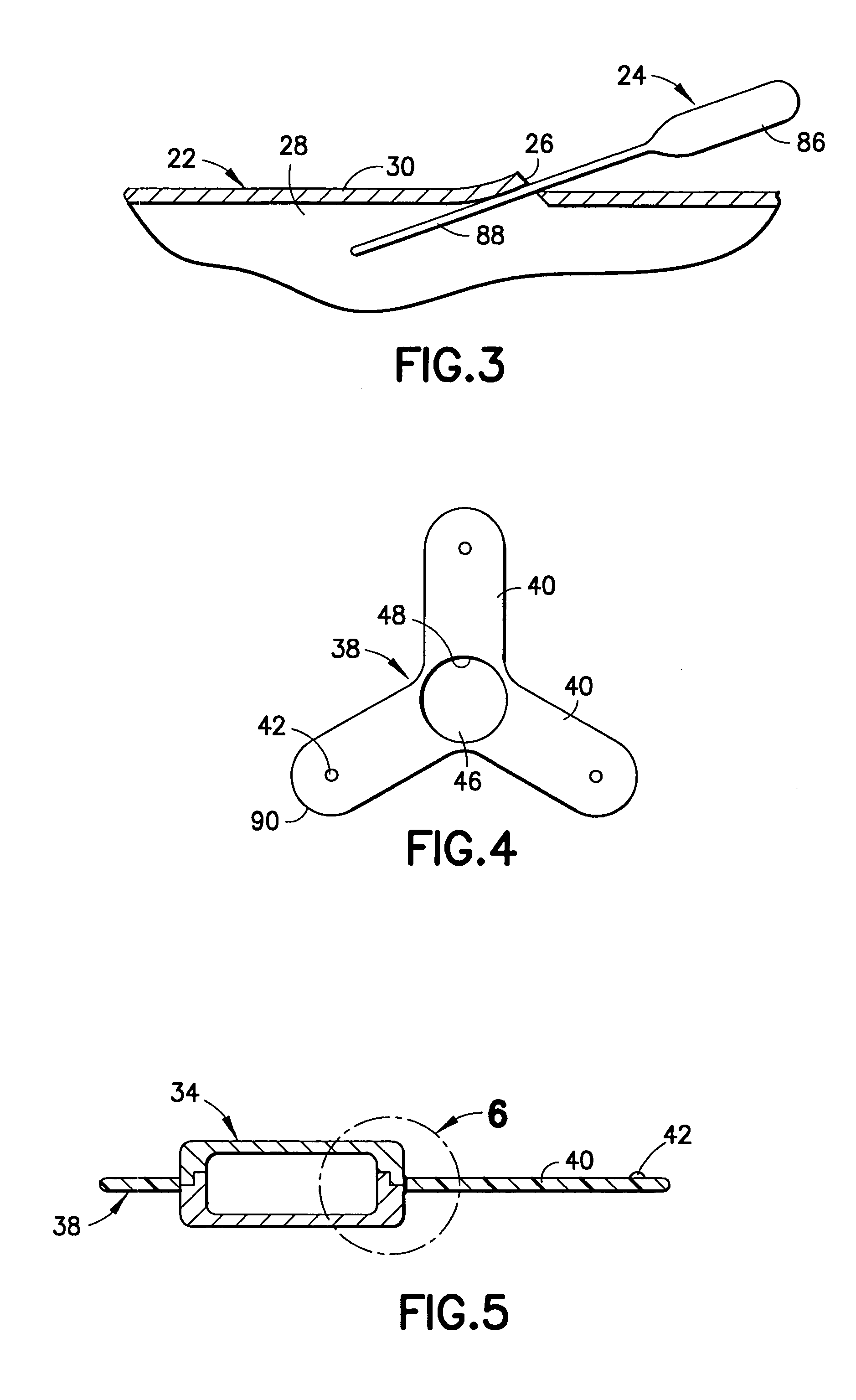Implantable leadless cardiac device with flexible flaps for sensing
a leadless cardiac and flexible technology, applied in the field of implantable leadless cardiac sensing devices, can solve the problems of lead complications even greater, life-threatening perforations of the great vessels and hearts, and the use of transvenous lead systems, despite their many advantages, are not without chronic patient management limitations, and are not without complications
- Summary
- Abstract
- Description
- Claims
- Application Information
AI Technical Summary
Benefits of technology
Problems solved by technology
Method used
Image
Examples
Embodiment Construction
[0028]Referring now to FIGS. 1 and 2, there is illustrated in top plan views, respectively, sensing apparatus 20 intended for subcutaneous implantation into a body 22. In FIG. 1, the sensing apparatus 20 has been reconfigured in a manner to be explained from its FIG. 2 form, and with the aid of a tool 24, is being inserted through an incision 26 into a cavity 28 (FIG. 3) beneath skin 30 of the body 22.
[0029]Although the present invention will be described with reference to the embodiments shown in the drawings, it should be understood that the present invention can be embodied in many alternate forms or embodiments. In addition, any suitable size, shape or type of elements or materials could be used.
[0030]The sensing apparatus 20 includes an electrical stimulator device 32 such as a pacemaker or an implantable cardioverter defibrillator (ICD) which is encased in a housing 34 having an outer peripheral surface 36. A flap member 38 of flexible insulative sheet material is mounted on t...
PUM
 Login to View More
Login to View More Abstract
Description
Claims
Application Information
 Login to View More
Login to View More - R&D
- Intellectual Property
- Life Sciences
- Materials
- Tech Scout
- Unparalleled Data Quality
- Higher Quality Content
- 60% Fewer Hallucinations
Browse by: Latest US Patents, China's latest patents, Technical Efficacy Thesaurus, Application Domain, Technology Topic, Popular Technical Reports.
© 2025 PatSnap. All rights reserved.Legal|Privacy policy|Modern Slavery Act Transparency Statement|Sitemap|About US| Contact US: help@patsnap.com



